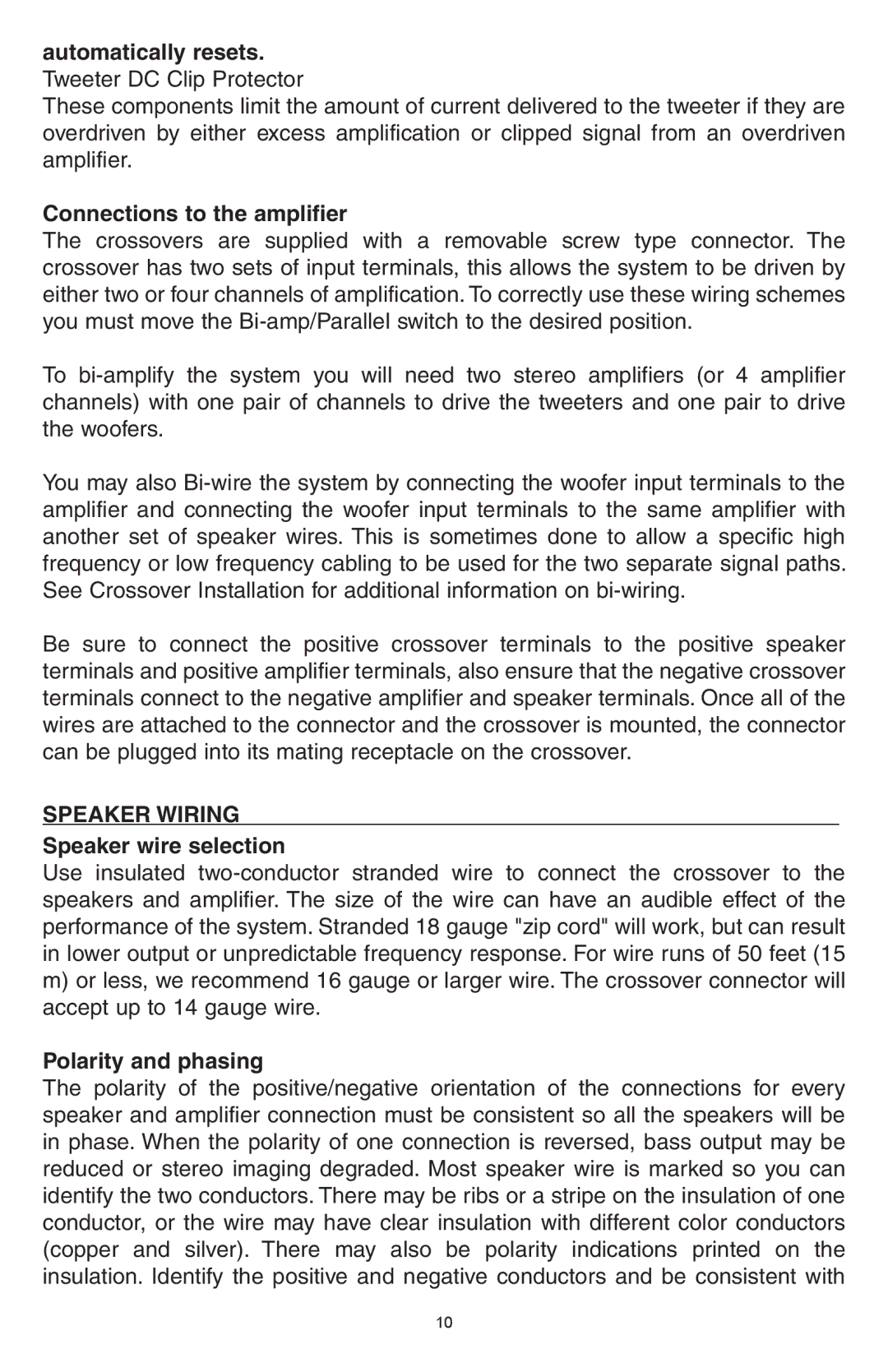automatically resets. Tweeter DC Clip Protector
These components limit the amount of current delivered to the tweeter if they are overdriven by either excess amplification or clipped signal from an overdriven amplifier..
Connections to the amplifier
The crossovers are supplied with a removable screw type connector.. The crossover has two sets of input terminals, this allows the system to be driven by either two or four channels of amplification.. To correctly use these wiring schemes you must move the
To
You may also
Be sure to connect the positive crossover terminals to the positive speaker terminals and positive amplifier terminals, also ensure that the negative crossover terminals connect to the negative amplifier and speaker terminals.. Once all of the wires are attached to the connector and the crossover is mounted, the connector can be plugged into its mating receptacle on the crossover..
SPEAKER WIRING
Speaker wire selection
Use insulated
m)or less, we recommend 16 gauge or larger wire.. The crossover connector will accept up to 14 gauge wire..
Polarity and phasing
The polarity of the positive/negative orientation of the connections for every speaker and amplifier connection must be consistent so all the speakers will be in phase.. When the polarity of one connection is reversed, bass output may be reduced or stereo imaging degraded.. Most speaker wire is marked so you can identify the two conductors.. There may be ribs or a stripe on the insulation of one conductor, or the wire may have clear insulation with different color conductors (copper and silver).. There may also be polarity indications printed on the insulation.. Identify the positive and negative conductors and be consistent with
10
